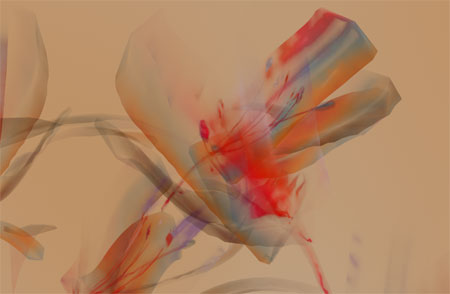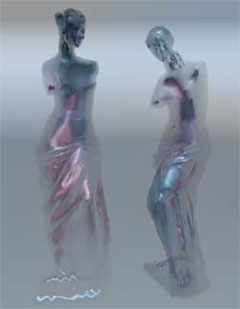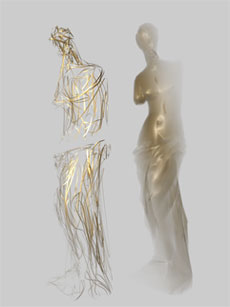The path to the realization of visual structure and color is different from painting with oils than working through a color monitor. The mediums requires different approaches to realize similar goals. At the outset oil paint is a messy substance and a dead medium to which one gives life. Initially it is flat and opaque. Through the mixing of colors you build color saturation and intensity to represent something. For some painters this process may require the juxtaposition of complimentary tones of color to achieve a quality of light.
The emitting light from a color monitor can give colors the same degree of saturation. Dealing with color saturation and intensity through the monitor is like reverse engineering. You do it backwards. Over saturated color needs to be taken down and brought under control. Sometimes I use atmosphere or transparency to soften a color. The use of ambient light can help with saturation. It can give more life to darker colors. Intensity is affected by the setting and position of the lights. A shader enables me to modulate a color across a surface. It is always a challenge to keep a sense of a color field.





